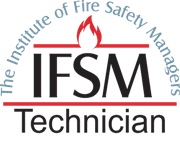
Industry News
New Fire Regulations
On 1st October 2023, the government introduced regulations under article 24 of the Regulatory Reform (Fire Safety) Order 2005 (Fire Safety Order) to implement most of those recommendations made to the government in the Grenfell Tower Inquiry Phase 1 report which required a change in the law.
These regulations made it a requirement in law for responsible persons of high-rise blocks of flats to provide information to Fire and Rescue Services to assist them to plan and, if needed, provide an effective operational response.
Also, the regulations require responsible persons in multi-occupied residential buildings which are high-rise buildings, as well as those above 11 metres in height, to provide additional safety measures.
In all multi-occupied residential buildings, the regulations require responsible persons to provide residents with fire safety instructions and information on the importance of fire doors. The regulations apply to existing buildings, and requirements for new buildings may be different.
In high-rise residential buildings, responsible persons are required to:
- Building plans: provide their local Fire and Rescue Service with up-to-date electronic building floor plans and to place a hard copy of these plans, alongside a single page building plan which identifies key firefighting equipment, in a secure information box on site.
- External wall systems: provide to their local Fire and Rescue Service information about the design and materials of a high-rise building’s external wall system and to inform the Fire and Rescue Service of any material changes to these walls. Also, they will be required to provide information in relation to the level of risk that the design and materials of the external wall structure gives rise to and any mitigating steps taken.
- Lifts and other key firefighting equipment: undertake monthly checks on the operation of lifts intended for use by firefighters, and evacuation lifts in their building and check the functionality of other key pieces of firefighting equipment. They will also be required to report any defective lifts or equipment to their local Fire and Rescue Service as soon as possible after detection if the fault cannot be fixed within 24 hours, and to record the outcome of checks and make them available to residents.
- Information boxes: install and maintain a secure information box in their building. This box must contain the name and contact details of the Responsible Person and hard copies of the building floor plans.
- Wayfinding signage: to install signage visible in low light or smoky conditions that identifies flat and floor numbers in the stairwells of relevant buildings.
In residential buildings with storeys over eleven metres in height, responsible persons are required t0: - Fire doors: undertake annual checks of flat entrance doors and quarterly checks of all fire doors in the common parts.
In all multi-occupied residential buildings with 2 or more sets of domestic premises, responsible persons are required to: - Fire safety instructions: provide relevant fire safety instructions to their residents, which will include instructions on how to report a fire and any other instruction which sets out what a resident must do once a fire has occurred, based on the evacuation strategy for the building.
- Fire door information: provide residents with information relating to the importance of fire doors in fire safety.
https://www.gov.uk/government/publications/fire-safety-england-regulations-2022/fact-sheet-overview
HSE Farm Visits
HSE are visiting farms across Great Britain throughout winter 2023 and into Spring 2024 and any inspections will focus on the main causes of death and severe injury in farming, including falls from height.
Autumn and Winter are traditionally a time when farms may need to conduct building maintenance, e.g. repair leaking roofs or replace damaged roof sheeting or repair storm damage.
Before conducting any work at height, stop and think:
- Avoid work at height wherever possible. Do as much as you can from the ground, e.g., use extending equipment to clear gutters
- Avoid doing the work yourself. Use a professional contractor with the knowledge, skills, equipment, and experience to safely work at height on buildings, roofs, and structures.
- On the rare occasions where roof work or building maintenance at height cannot be avoided or done by competent contractors or specialist professionals, make sure the work is planned and conducted by people with the right training and equipment – for example, trained and experienced people using a mobile elevating work platform (MEWP) or scaffold
- Do not be tempted to use the wrong equipment. Being lifted on the forks or bucket of a telehandler or forklift truck is illegal. As is walking or working on fragile roof materials.
Remember that fragile materials should have prominent warning signs to alert anyone working in the vicinity.
Unsafe work at height really is not worth the risk. Make sure that work at height risks is controlled on your farm.
If you are located in Suffolk, Norfolk, Cambridgeshire or Essex, contact us to discuss how we can help with risk assessments or to arrange a consultation.




